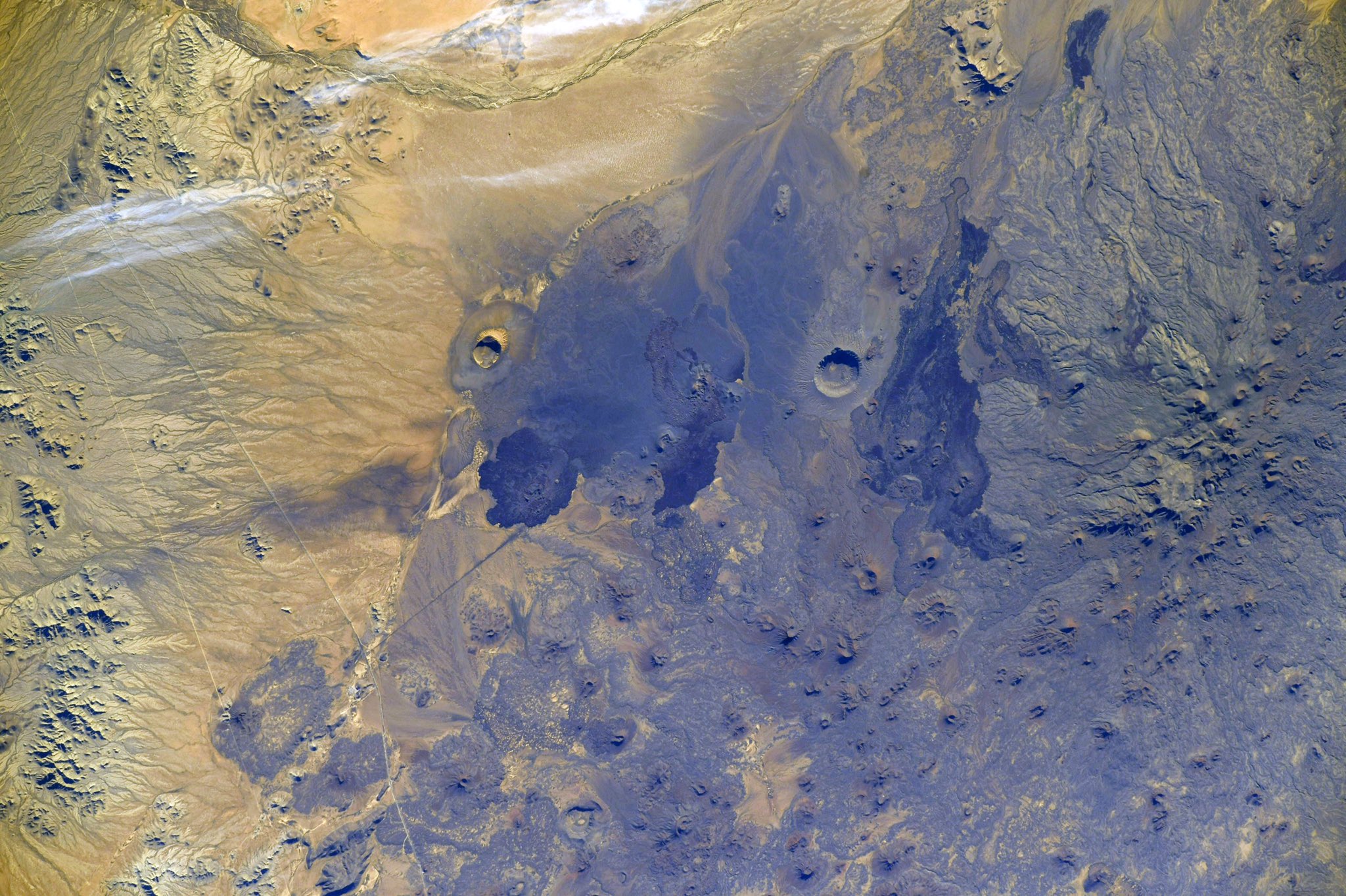[:ja]ジェシカ・メイヤー宇宙飛行士がISSから撮影したメキシコのソノラ砂漠のピナカテ火山です。

「ピナカテ火山とアルタル大砂漠生物圏保存地域」は、北米大陸の4大砂漠の1つであるソノラ砂漠に位置し、2013年に世界自然遺産に登録されました。アメリカ国境に広がる砂漠地帯にあるエル・ピナカテ火山を中心とした溶岩地帯と、巨大クレーターを持つ大砂漠であるグラン・ディシエルト・デ・アルタルが含まれています。火山と砂漠からなる優れた景観美を有するほか、盾状火山に囲まれた砂漠という点で科学的に注目を集めています。ピナカテ火山ではマグマの水蒸気爆発によって生まれた最大1896mもの巨大な爆裂火口や溶岩洞窟などが見られ、地質学的、地形学的な実験室とも呼ばれるほどです。湿った風が西から吹き込むが太平洋岸の山脈に阻まれ、雨雲は砂漠に発生しないことが1年の大半を占め、北アメリカで最も暑く広い砂漠の1つとなりました。メキシコ宇宙局(AEM)、NASA、ソノラ大学(UNISON)は、この過酷な環境のバイオスフィア「エル・ピナカテ」で、火星探査に向けた宇宙飛行士の訓練を始めることを発表しています。
地上の様子はこちらです。

参考文献: Jessica Meir’s Tweet
地球俯瞰画像を見る: LiVEARTH
[Earthview Wonders] No.1229: Sonoran Desert, Mexico🇲🇽
Astronaut Jessica Meir captured from ISS The Pinacate Peaks in the Sonoran Desert, Mexico.

The Sonoran Desert is a North American desert that extends from Arizona, U.S. to the Northwestern Mexico in Sonora. The Pinacate Peaks are a group of volcanic peaks and cinder cones located mostly in the Sonoran Desert, surrounded by the vast sand dune field of the Gran Desierto de Altar. NASA sent astronauts here starting in 1965 for geologic training, given the similarity of the terrain to the lunar surface, and included training models of lunar surface equipment. Now, the Mexican Space Agency (AEM), the National Aeronautics and Space Administration (NASA) and the University of Sonora (UNISON) will work together to carry out tests in the Biosphere Reserve “El Pinacate,” a dormant volcanic area, with the objective of training astronauts for the multinational expedition to Mars in the 2030s.
The local scenery on the ground is as follows.

Reference: Jessica Meir’s Tweet
See earthview photo gallery: LiVEARTH[:]